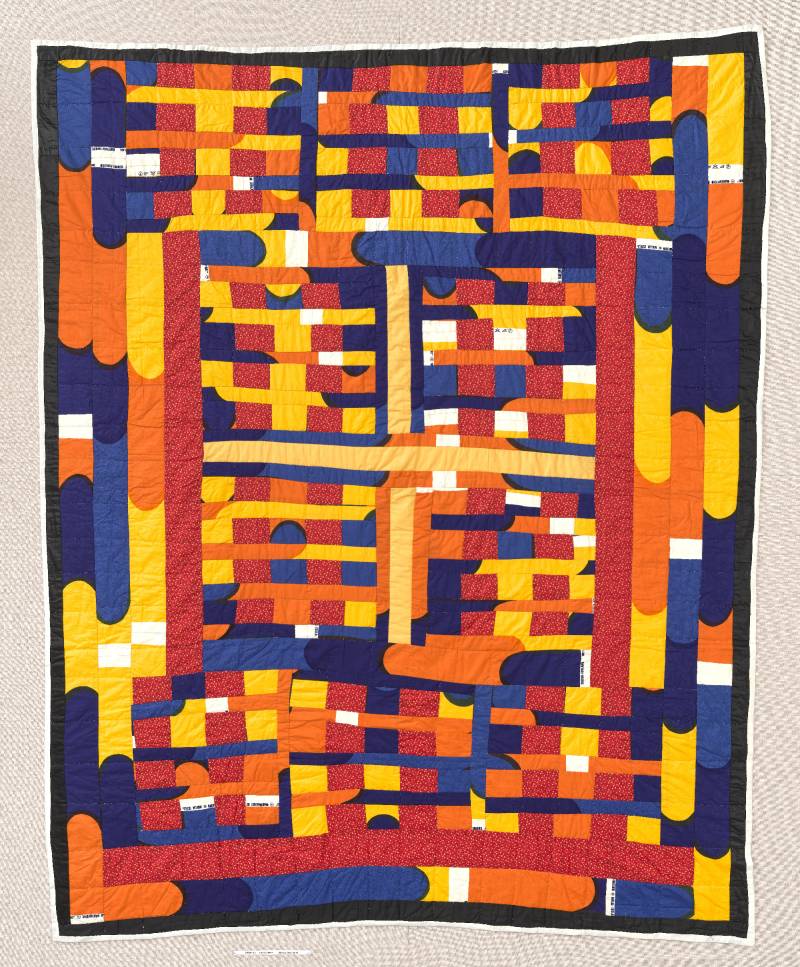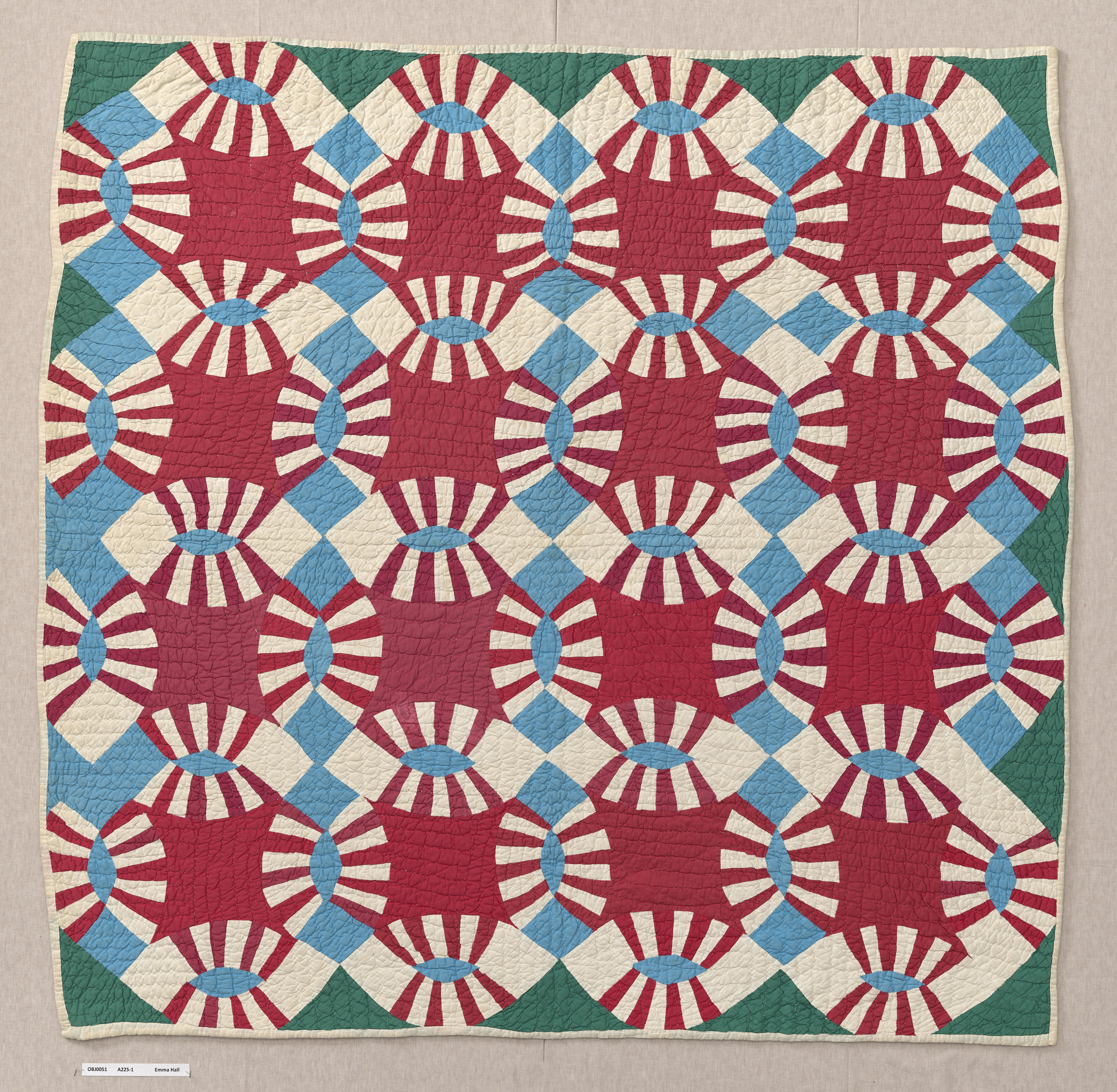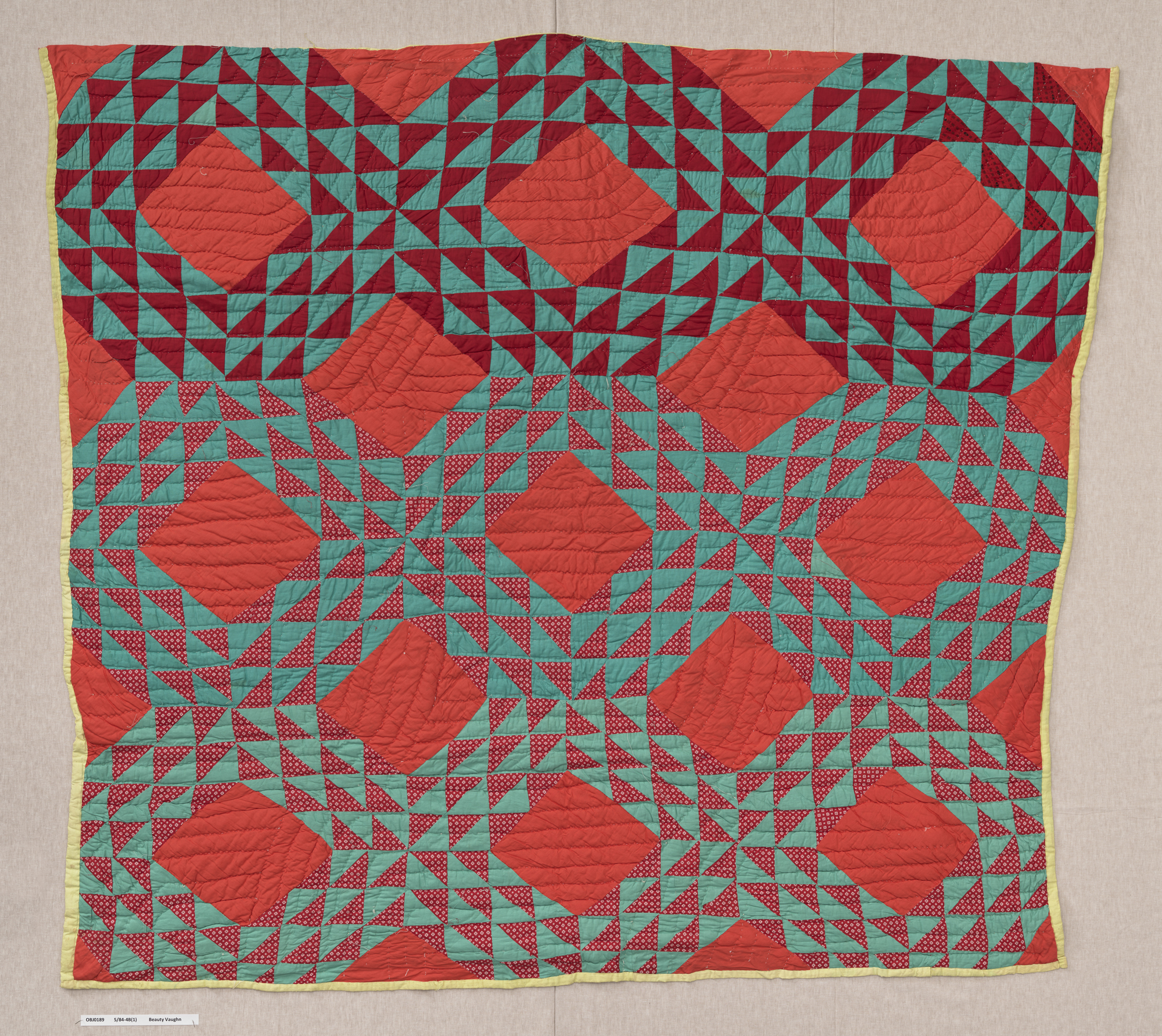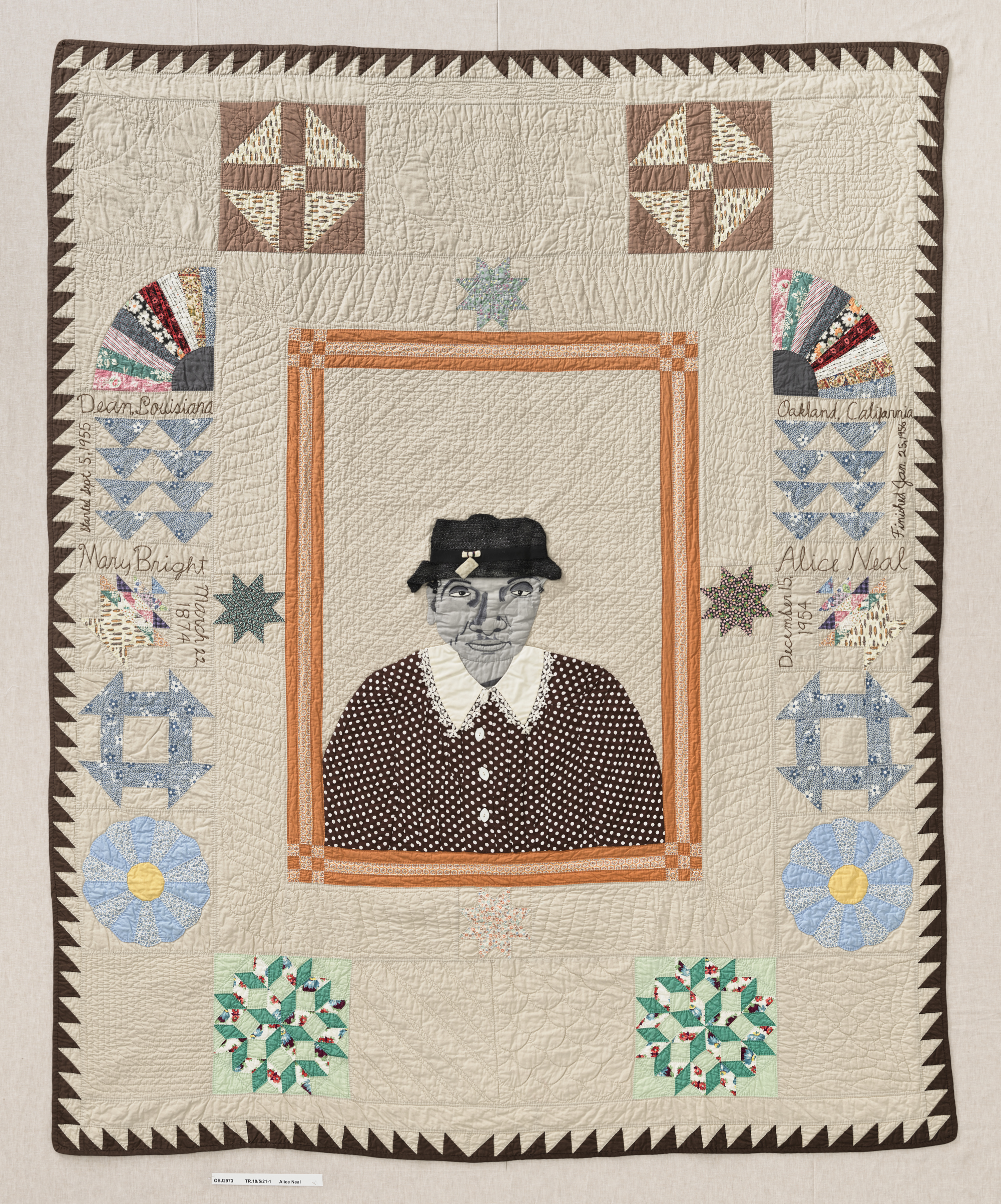We’ve waited a long time for a glimpse at the true scope of the Berkeley Art Museum and Pacific Film Archive’s African American quilt collection. When Eli Leon’s bequest to the museum was announced in late 2019, “nearly 3,000 works” was such a staggering number that it was difficult to appreciate just what it would look like to display this unexpected bounty. (The museum only learned about Leon’s gift after his death in 2018.)
At BAMPFA, the African American Quilt Show We’ve Been Waiting For

Routed West: Twentieth-Century African American Quilts in California, the second BAMPFA exhibition drawn from the Leon collection, after the transcendent Rosie Lee Tompkins show in 2020, demonstrates that Tompkins may have been a prolific favorite (Leon collected over 500 works by her), but not an outlier.
Routed West is, in a word, dazzling.
The exhibition is loosely organized chronologically to follow the journeys of the quilts — along with their makers and keepers — from the American South to the Bay Area between 1940 and 1970. As millions of Black Americans moved West during the Second Great Migration, seeking better jobs and an escape from overt racism, they brought with them portable mementos of the homes they left behind. Quilts, epically time-consuming manifestations of comfort and great care, can hold within them entire genealogies, lives remembered in stitches and bits of well-worn fabric.

Within BAMPFA’s galleries, these massive quilts hang from the walls, drape across gently angled supports and lay like the pages of a giant open book on curved, horizontal platforms. This last presentation, seen in the first gallery, is especially on the nose: these quilts are stories, told by hand through fabric choice, pattern arrangement and with painstaking attention to detail.
As quilts have increasingly appeared in art museums, there’s been a tendency, exhibition curator Elaine Yau notes, to treat them solely as aesthetic objects — geometric abstractions that hang nicely beside modernist paintings. Museums, she says, are the latecomers. Quilting is an art practice that cannot be reduced to a conversation about form.
In Routed West, this means recentering the art historical narrative on the quiltmakers and their lives. That approach plays out clearly in the object labels, which often detail how an artist learned and deployed their craft, the source of their fabric and when a particular quilt entered Leon’s collection. In these labels are complex, rewarding narratives of distant cousins reconnecting in the Bay Area, and of men who quilted to provide for their families.
Since quilting is a practice often passed down through generations, many groupings in Routed West are stand-ins for family trees. A particularly stunning trio — Beauty Vaughns’ Untitled (Ocean Wave), Pearl Nunley’s Flower Garden (Sunflower variation) and an untitled Arbie Major quilt — represents two daughters flanking their mother.

The labor and time-intensive practice of quilting also means that quilts pieced by one family member may have been quilted by another. Leon also purchased pieced quilt tops and handed them off to be quilted by someone else; Irene Bankhead was a favorite.
In the fourth section of the show, “Rooted West,” quilts made since the 1970s in the Bay Area leave their supports to hang from the ceiling in graceful curves. The treat here is getting a peek at their sometimes equally colorful backsides, often a clearer way to see the quilting. This presentation gives the quilts an even more substantive, corporeal form.
Throughout the show, small samples of different quilting materials and patterns are provided as tactile aids next to the untouchable originals. It’s a move you might see at the Oakland Museum of California, and it’s nice to watch BAMPFA play a bit with their approach to presentation — and acknowledge how difficult it is to not caress velvety corduroys or puffy checkerboards.
Speaking of new approaches, here’s another one: a full-blown installation of a 1970s guest room from Isiadore Whitehead’s house, purchased by Leon in its entirety. A photo of Whitehead in situ sits on the bedside table. A double wedding ring pattern graces every available fabric surface — chair cushion, curtains, rugs and the scalloped-edge quilt covering the bed.

I have too many favorite moments in this show to name them all, so I’ll mention just three: Arbie Williams’ rainbow-striped overalls; Alice Neal’s stately portrait of her late mother (with a detachable hat); and next to it, the pins left in an unfinished quilt.
Plus, any time there’s strings involved. Oh, and everywhere an established pattern breaks down and gets a bit chaotic. (I love this show.)
The exhibition’s final gallery pays homage to quilting as a living tradition. Quilts loaned by members of the African American Quilt Guild of Oakland and other local artists surround two vitrines of material from both Leon’s papers and California quilting guilds. Here hang some of the most narrative works in the show, with text and photographs integrated into the textiles.
Just before the exhibition’s exit, Gussie Wells’ moving blanket-esque Untitled (Strip), with two fluorescent orange stripes running vertically up its center, is a final zap to the senses. It’s an alert, a stunning announcement of this art form’s continued versatility and power. And it might just send you looping back around to the entrance for another go.
‘Routed West: Twentieth-Century African American Quilts in California’ is on view June 8–Nov. 30, 2025, at the Berkeley Art Museum and Pacific Film Archive.

